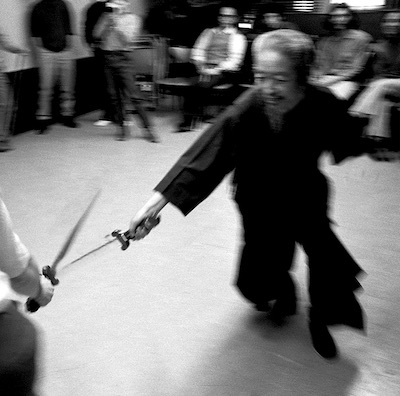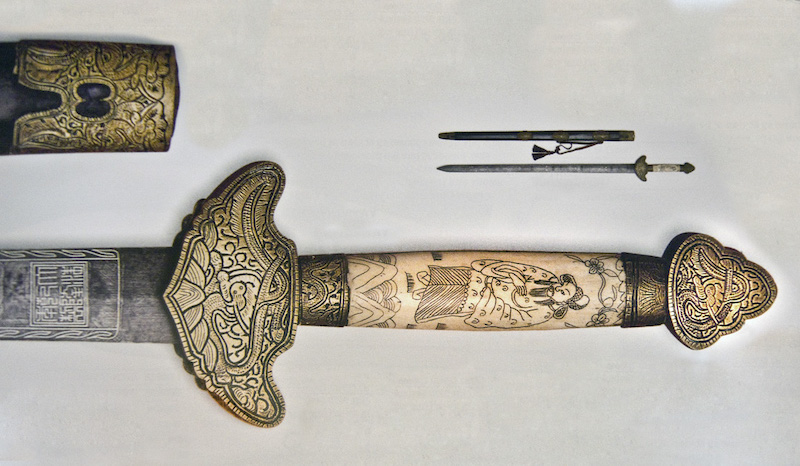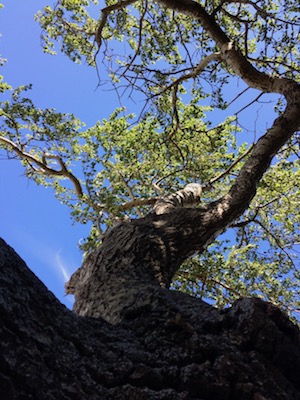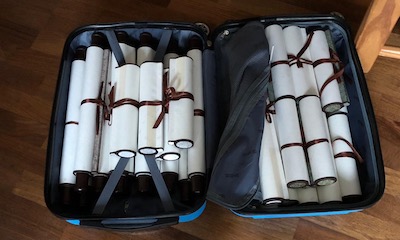Most of the techniques that we use in Tai Chi can be seen as ‘tricks’ that function in circular patterns, as most of our ‘returns’ are circular in nature. For example if the O pushes our left shoulder, we keep our centre still, let our left shoulder go in the direction of the push as our right shoulder (along with our arm) moves in the opposite direction, pushing the O in the direction of his initial push. From above this would resemble the Yin/Yang symbol.

In fencing if the O pushes our blade in a circle we take that energy, continuing the O’s circle, adding a little speed and spiral toward the target – the O’s limb or body.
There are several ways of perfecting this principle:
- Practise the core exercises.
- Do the form with a specific technique or principle in mind.
- Ask those who can do it, to do it, so you can feel it.
- Practise it on beginners.
It is difficult to practise specific moves with someone on your own level since you both know what you are trying to do and the desire to cooperate often interferes with spontaneity.
Author and Images: Ken van Sickle
German version on our sister site!
- ON BEING A MASTER – Tai Chi Sword 53
- STRANGERS – Tai Chi Sword 52
- PADDED SWORDS – Tai Chi Sword 51
- SAFETY – Tai Chi Sword 50
- PARALLELS – Tai Chi Sword 49
- Swordsmanship – SEVEN QUOTES – Tai Chi Sword 48
- TI FENG & FA JING – Tai Chi Sword 47
- SUPPOSITIONS – Tai Chi Sword 46
- LAO TZU (Laozi) QUOTES – Tai Chi Sword 45
- ETIQUETTE – Tai Chi Sword 44
- FENCING PROCESS – Tai Chi Sword 43
- STRATEGIES – Tai Chi Sword 42
- TASSELS IN THE WIND – Tai Chi Sword 41
- SHOOT FLYING GOOSE – Tai Chi Sword 40
- RHINOCEROS GAZES AT MOON – Tai Chi Sword 39
- THE MASTER SITS BACK – Tai Chi Sword 38
- FIVE APPLICATIONS – 1. BLOCK AND SWEEP – Tai Chi Sword 37
- RULES OF ENGAGEMENT – Tai Chi Sword 36
- CONSIDER – Tai Chi Sword 35
- INVITATIONS – Tai Chi Sword 34
- THE TASSEL – Tai Chi Sword 33
- THE SWORD FINGERS – Tai Chi Sword 32
- Cheng Man Ching Photographs
- THE JOINTS – Tai Chi Sword 31
- THE GRIP – Tai Chi Sword 30
- SWORD MOVEMENT – Tai Chi Sword 29
- ON ALIGNMENT – Tai Chi Sword 28
- CONCERNING THE CENTRE – Tai Chi Sword 27
- EQUATIONS – Tai Chi Sword 26
- HSIN AND CHI – Tai Chi Sword 25
- On studying – NINE QUOTES – Tai Chi Sword 24
- THE SWORD MAIDENS – Tai Chi Sword 23
- THE SWORD AND CALLIGRAPHY – Tai Chi Sword 22
- Returning – MORE THOUGHTS – Tai Chi Sword 21
- Levels of TAI CHI SWORD – Tai Chi Sword 20
- FENCING – Tai Chi Sword 19
- Transcendence – Tai Chi Sword 18
- TURNING TRICKS – Tai Chi Sword 17
- Names of CHENG MAN CH’ING’S TAI CHI SWORD – Tai Chi Sword 16
- FORCE – Tai Chi Sword 15
- DIFFERENCES – Tai Chi Sword 14
- BEGINNERS’ MISTAKES – Tai Chi Sword 13
- MIND SETS – Tai Chi Sword 12
- SENSITIVITY – Tai Chi Sword 11
- HARMONY – Tai Chi Sword 10
- TIME AND HUMOUR – Tai Chi Sword 9
- WHY AND HOW – Tai Chi Sword 8
- SWORD DIMENSIONS – Tai Chi Sword 7
- A ROYALTY OF ARMS – Tai Chi Sword 6
- KENNETH VAN SICKLE – Tai Chi Sword 4
- CHENG MAN CH’ING – Tai Chi Sword 5
- PREFACE – Tai Chi Sword 3
- Introductory Thoughts – Tai Chi Sword 2
- EDITOR’S PREFACE -Tai Chi Sword 1
- Tai Chi Sword by Kenneth van Sickle





